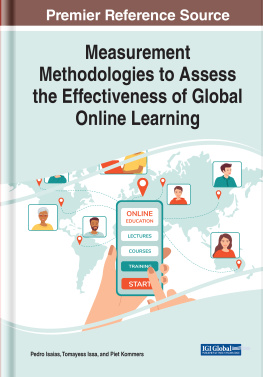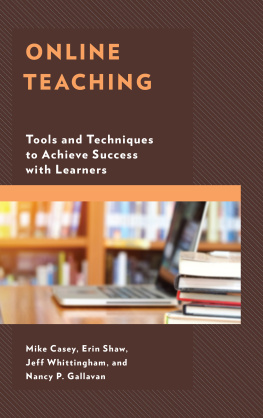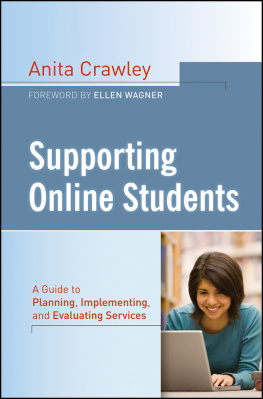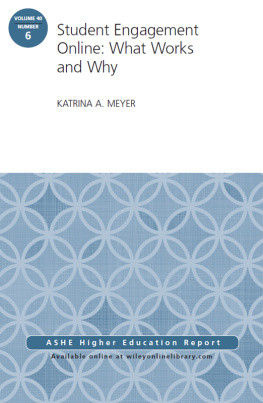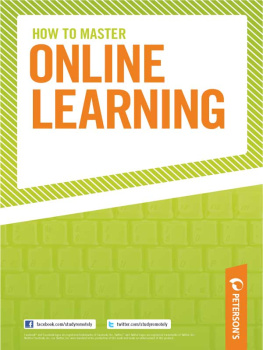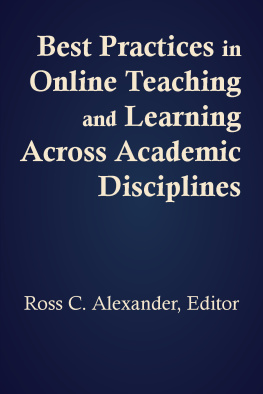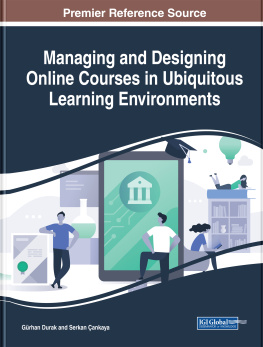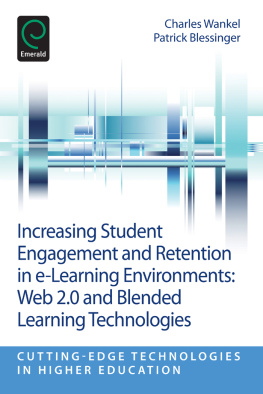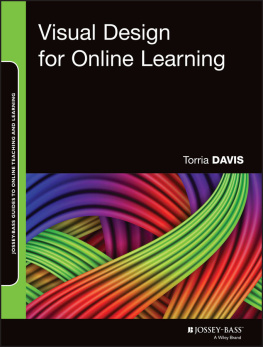All rights reserved. Published 2020
Cataloging-in-Publication Data is available from the Library of Congress.
A catalog record for this book is available from the British Library.
Johns Hopkins University Press uses environmentally friendly book materials, including recycled text paper that is composed of at least 30 percent post-consumer waste, whenever possible.
ACKNOWLEDGMENTS
This book owes its existence to learners: my students, learners Ive interviewed, and learners who have shared their thoughts with other researchers, with the media, and with the world at large through their writing.
Throughout my career, I have been fortunate to interact with a network of peers and colleagues who have helped me make better sense of online learning. These individuals have helped me by writing on the topic, by critiquing early drafts of my work, by commenting on my work, by writing with me, and by interacting with me online and offline. Theyve also helped me by just being who they are, by doing creative, generous, and important scholarship. I am especially appreciative of the work of the following individuals in impacting my perspective: Joan Hughes, Kate Bowles, Audrey Watters, Laura Czerniewicz, Shandell Houlden, and Royce Kimmons. If you havent had a chance to read their work, I highly recommend doing so.
This book would not have been possible without the support of my research assistants. Either by contributing directly to this work and/or indirectly supporting my research agenda; their help has been invaluable. Individuals contributing early research and writing directly to this work include Ash Shaw (who contributed to ).
Writing appearing in this book has appeared elsewhere in different formats, and, with permission, it is heavily edited and republished here. Specifically, the book draws from the following publications:
; and from G. Veletsianos and C. Miller (2008), Conversing with Pedagogical Agents: A Phenomenological Exploration of Interacting with Digital Entities, British Journal of Educational Technology 39 (6): 969986.
draws from G. Veletsianos, A. Collier, and E. Schneider (2015), Digging Deeper into Learners Experiences in MOOCs: Participation in Social Networks Outside of MOOCs, Notetaking, and Contexts Surrounding Content Consumption, British Journal of Educational Technology 46 (3): 570587.
draws from G. Veletsianos (2012), Higher Education Scholars Participation and Practices on Twitter, Journal of Computer Assisted Learning 28 (4): 336349; and from G. Veletsianos and C. Navarrete (2012), Online Social Networks as Formal Learning Environments: Learner Experiences and Activities, The International Review of Research in Open and Distance Learning 13 (1): 144166.
Introduction
In multiple conversations at multiple institutions over the years, I have heard educated, passionate, and good-willed people talk with excitement about the number of students participating in online and distance courses. More than a million students in Canada. More than 100,000 in the early massive open online courses (MOOCs), more than 20,000 in recent ones. More than 200 enrolled in a for-credit foundations course at a local university. Nearly two million online learners at one of the worlds well-known open and mega university. While such figures are impressive, an enthusiastic and all-consuming focus on the numbers can lead us to lose sight of Irma, Magda, Hassan, James, and Asma; or of the reasons that Anna failed to complete her degree; or Nick and Cassandra who were compelled to enroll in higher education while raising a family. Nor is it just our fascination with scale and numbers that leads us astray. A variety of common discourses, practices, and pressures operate in similar ways to alienate us from students and their realitiessuch as the adoption of business-like language to refer to students as prospects or financial constraints that move us to prioritize goals like competitiveness and growth over more community-oriented or people-centered goals.
The future of higher education is at a crucial turning point. True, the university as an institution is facing immense pressures and a myriad of challenges, and various aspects of it are badly in need of tweaks, reform, and perhaps bottom-up rethinking. Online education, however, is not a panacea, but just one aspect of what higher education may look like in the future. To help create that future, I argue that the people involved in online educationinstructors, researchers, administrators, instructional designers, directors of centers of teaching and learning, policymakers, entrepreneurs, technology developers, and higher education consultantsneed to better understand the needs and experiences of our students. I include myself in this group, and for brevitys sake I will refer to this group as we throughout the book. We need to understand students as people, as individuals who have agency, desires, mishaps, dreams, life-changing accidents; as individuals who face the daily minutiae of life; and as people who may even have instructive and insightful ideas about the future of education. The purpose of this book, therefore, is to examine online learning through the lens of student experience and help us narrow our distance from the online students we serve.
To that end, the book is both descriptive and analytical. Each of the following chapters focuses on an important or noteworthy aspect of online learners experiences by offering, first, an actual or composite story from an online student gathered from my own research and experiences or occasionally from other reports, followed by an analysis of that story that also examines and synthesizes some of the existing research on the theme. I was inspired to use this approach after reading The Man Who Mistook His Wife for a Hat, a book in which Dr. Oliver Sacks presented short narratives of patients with neurological disorders that enabled him to discuss various aspects of neurology. By offering a deeper understanding and appreciation of learner experienceswhich Parrish (2005) describes as the ways learners interact with and respond to content, activities, instructional methods, instructors, and the context within which learning and instruction happenthis book is intended to help us learn more about our students and uncover ways we can refine and improve online teaching, learning, and education.
Online education has a distinctive quality, one that risks creating and widening the distance between us and our students. That quality is the physical distance that separates us from students and requires us to take active steps to build and foster our relationship with them. In online learning settings, students participate in courses from locations that are usually at a distance from the educational institution offering the course, typically through such activities as completing assignments at home, listening to an assigned podcast on a commute, or studying for an exam at a public library. This geographic dispersal is what advocates of online learning are referring to when they claim that online learning can take place anywhere. In this context, courses may meet in real time (synchronous learning) or never meet in real time (asynchronous learning). Some online courses may meet on a regular and consistent basis much like conventional face-to-face courses, others may have optional scheduled meetings, and some may be asynchronous with optional one-on-one tutorials. In all these cases, learners experiences take place at a distance from their instructors and classmates. This may even be true for online courses taken by students enrolled in predominantly face-to-face institutions, such as an online course offered to allow students from different majors to fulfill a requirement not offered by their own department.


